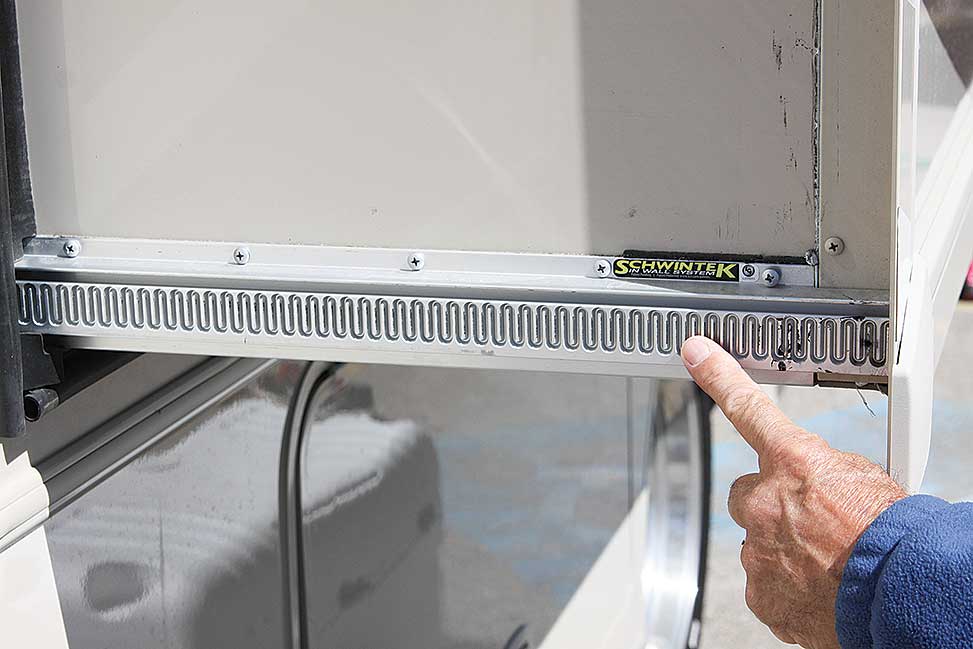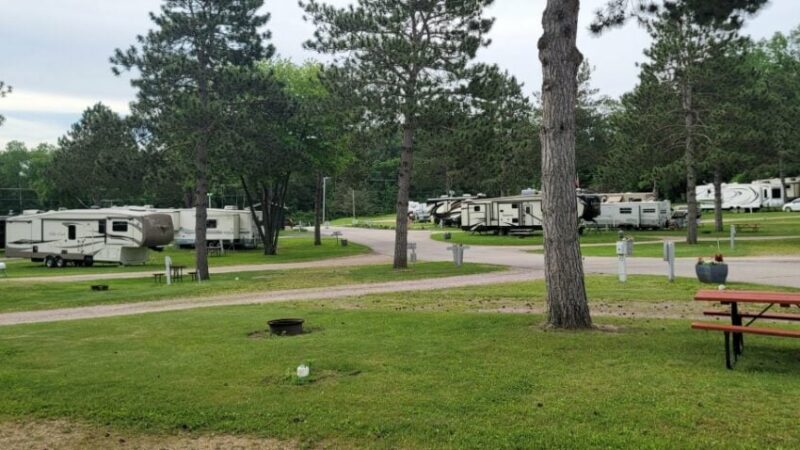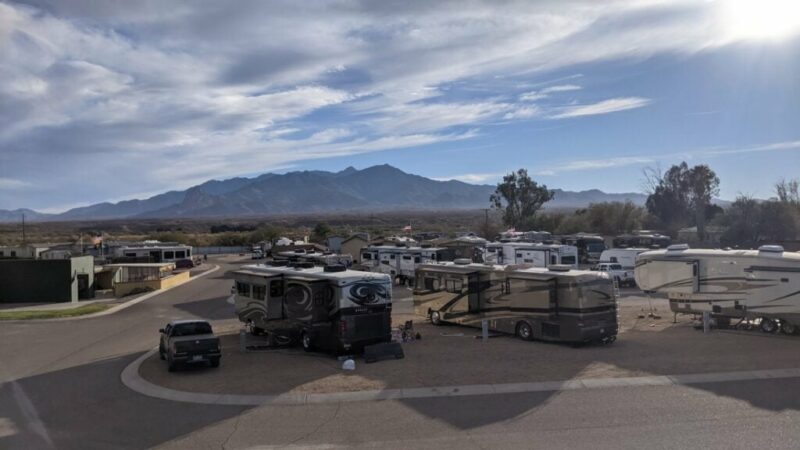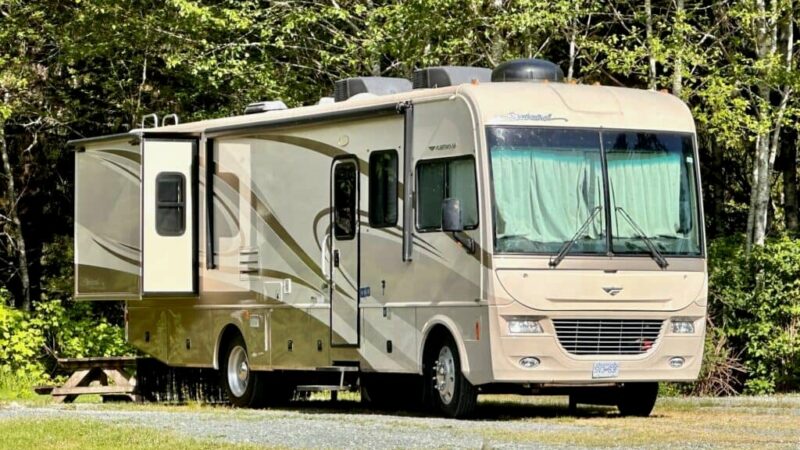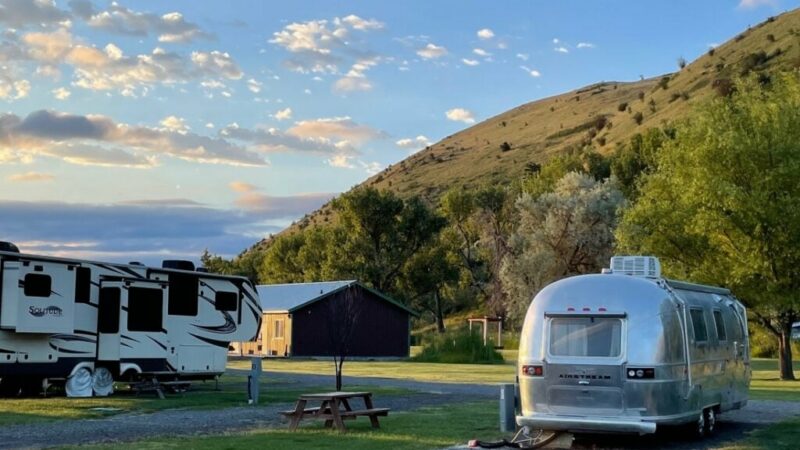RV Slideout Repair: DIY or Professional Fix?
RV slideout repair can be time-consuming and costly. So, is it a DIY job or one best left to the pros? Here’s what you should know about RV slideout repair to help get you back on the road.
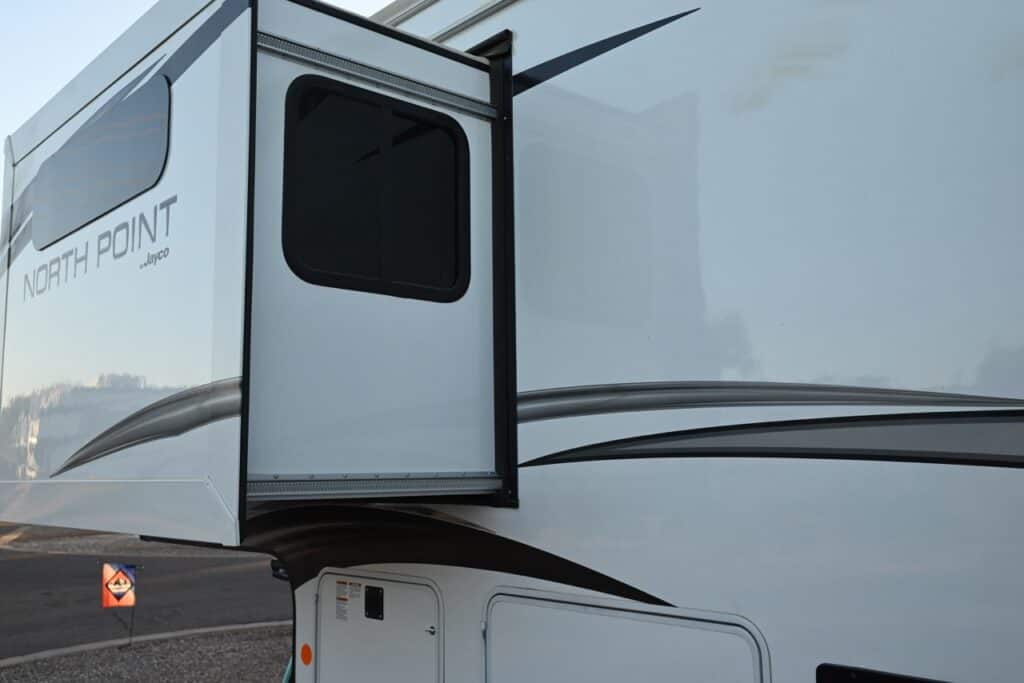
The majority of RVs now have a slideout, and many have multiple slideouts. In fact, the extra space slideouts provide at the push of a button has changed the RV world. Slideouts come in various sizes and use multiple systems to operate.
The weight of the slide, along with the fact that they are extended and supported outside the RV walls, results in strain on parts. And, moving this weight in and out continuously requires moving parts that require maintenance and sometimes repair.
There are multiple parts including moving pieces that over time can wear and become damaged. That’s because the structure of the slide itself is manufactured the same as the walls, floor, and ceiling of the RV. This means water damage can also be an issue for slideouts.
Reasons For RV Slideout Repair
Slideout repairs can range from minor to major and can be free or very costly. And some may be the result of a lack of maintenance, damage, or improper operation. Whatever the reason, repairs should be done as soon as possible to prevent further damage.
A non-working slideout can prevent you from using your RV if it is stuck closed or open. A slideout with water damage can deteriorate quickly resulting in a costly repair. Even minor repairs, if not dealt with right away, can cause major issues.
Water damage
Water damage is something no RV owner wants to deal with. And such damage can result from a small unidentified leak around a window or seal and can grow unknowingly inside walls, ceilings, and floors. Oftentimes, by the time signs of water damage appear, there is much more damage than what is visible.
If caught early, water-related repairs may be as simple as resealing a window. If a leak has been present for an extended period, it may mean major renovations to the slideout. Because water damage is most often within the interior and exterior surfaces of the RV, removing interior or exterior paneling is often required.
The main consideration in dealing with water damage is to track down all damage and repair it correctly. Simply patching up a leak location and leaving behind affected materials will lead to further rot and mold.
Water that has leaked around a window, for example, may have rotted the window frame. This damage would require the removal of the window and rebuilding of the window frame and possible framing surrounding the area.
Water damage must be taken seriously and repaired correctly. When inspecting a potential water leak, you must be prepared to follow the leak as far as it goes. You must also understand that opening a wall, ceiling, or floor surface could reveal a real mess.
Motor repair
One common RV slideout repair is the repair of motors. Many slideouts are extended and retracted by using electric motors.
Electric slideout motors, in most cases, are repaired by service technicians. That’s because testing and repairing them is outside the skill set of most RV owners. And in most cases, if an electric slideout motor is found to be non-functional, it will be replaced.
Replacement of the motor is something some RV owners may choose to do themselves. But, as with any electrical work, ensuring power is disconnected to avoid injury is the priority.
If you have an electric motor that is not functioning, the first step should be the easiest fix. Check breakers and fuses for tripped or blown breakers or fuses. If this is not the cause, further repair may be necessary.
As mentioned, repairing an electric motor is not a common DIY project and is best left to the pros. In many cases, the repair of a motor will not be worth the cost of purchasing a new electric slide motor. But if a new motor is purchased and you will be replacing the broken motor, this can be a DIY task.
Track and alignment issues
Just as there are multiple types of ways to power slide-outs, there are multiple systems that extend and retract the slideouts. Slideout adjustment is one of the most common RV slideout repair tasks.
Rack-and-pinion systems
These are the most common slideout systems. They consist of a gear that meshes with a grooved track. The rails are mounted to the bottom of the slide room and are robust metal components. Because they’re mounted under the RV, these components are constantly exposed to dirt and road grime.
If proper cleaning, maintenance, and lubrication are completed periodically, these gears can wear resulting in operational issues. Alignment can also become an issue that can cause further damage. If you notice your RV’s slide is not extending and retracting evenly from both sides, realignment is necessary.
The Schwintek system
Easily identified by the rails mounted on the side of the slideout with its unique wavy track design. This system is seen on newer RVs and primarily used on smaller, lighter slideouts.
This system is designed to be self-aligning, however, this doesn’t mean there will never be a need for it to be realigned. When this system was first introduced, it was used on some larger, heavier slides, which lead to potential problems on some RVs.
Keeping the small groove in the track system clean is very important. Unlike the rack and pinion systems, the components on the Schwintek are not as robust.
Hydraulic systems
Hydraulic slideout systems are used on many larger RVs, motorhomes, and on large heavy slides. The system utilizes pressurized hydraulic fluid in cylinders to operate the slide-out.
Hydraulic RV slideout repairs are often left to service technicians due to the high-pressure lines and the importance of keeping contaminants and air from entering the system. Loose fittings can easily be tightened and fluid levels added to; these two things can correct many issues.
These systems are smooth operating and are most often integrated into a complete system that operates stabilization jacks as well. This opens the possibility of the jack system causing issues with the slideout system and vice versa.
Hydraulic systems consist of a reservoir with hydraulic fluid, lines, and fittings rated for pressure, a valve or manifold for directing fluid, and cylinders that extend and retract. Hydraulic systems rely on fluid retention and pressure to operate. Leaks are the number one cause of problems in these systems.
A drop in fluid volume and/or pressure can present problems. Checking for leaks and watching the fluid reservoir level is important. If the fluid level is regularly going down, look for and repair leaks.
Should You Perform Your Own RV Slideout Repair?
Slideout maintenance is something RV owners can easily do themselves. This will help prevent many slideout repairs.
When it comes to slideout repairs, your skill set and the complexity of the repair will determine if it’s a doable task or not. As mentioned previously, repair of electrical components and involved hydraulic repairs are often better suited for professionals.
Realignment is something owners can perform on their own as well as electric motor replacement. Water damage, depending on the severity and your abilities are often tackled by RV owners as well.
When considering a repair, look at the work involved to fix the problem correctly and completely and weigh it against your time and competence in doing so. Many repairs that may seem outside your abilities can be researched and made easier with instructional videos and the help of online RV groups, such as RV LIFE’s own irv2.com.
The post RV Slideout Repair: DIY or Professional Fix? appeared first on RV LIFE.
Source: https://rvlife.com/what-you-should-know-about-rv-slideout-repair/

